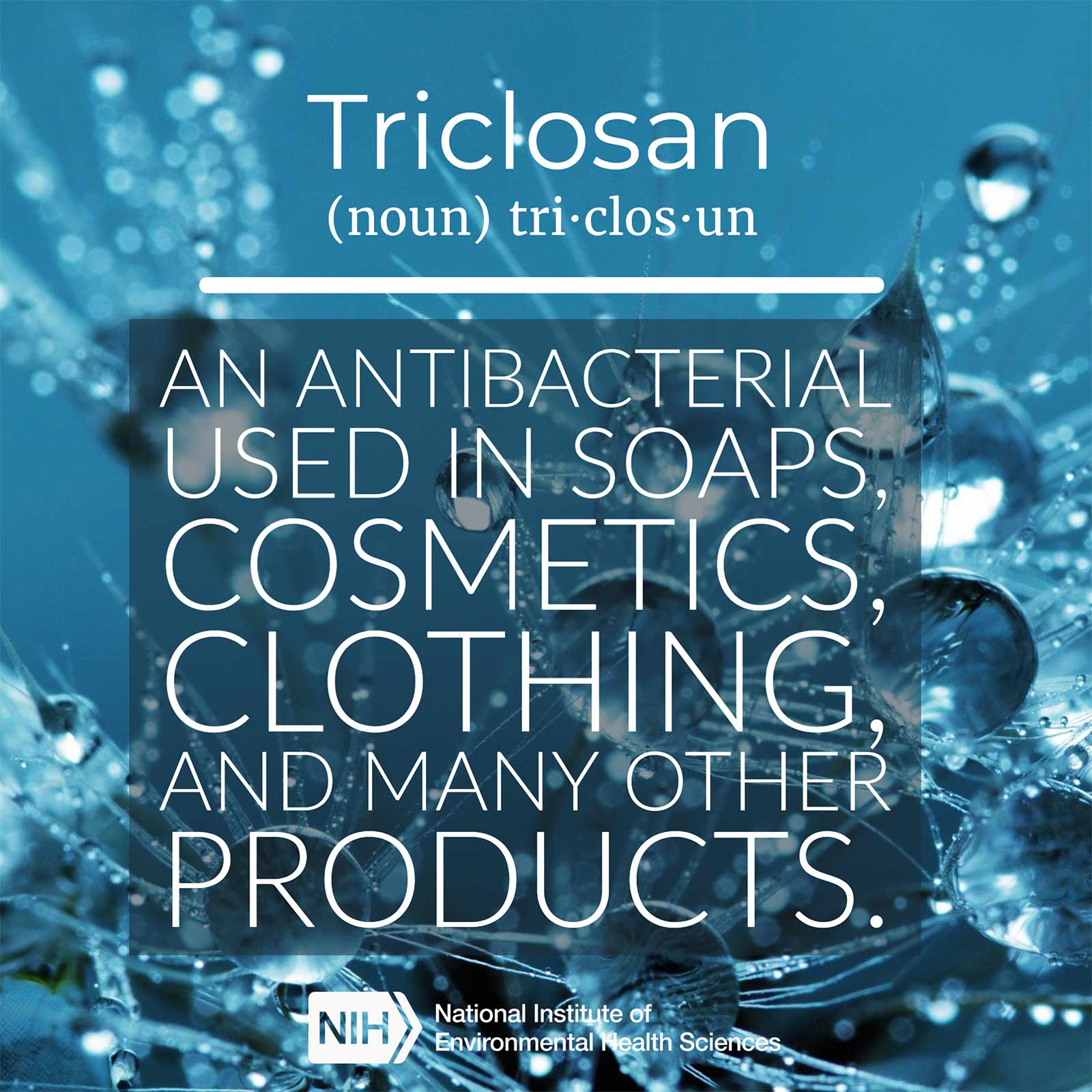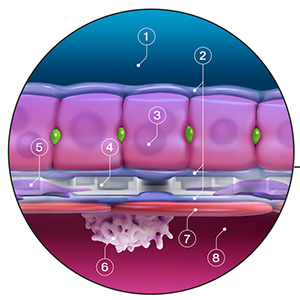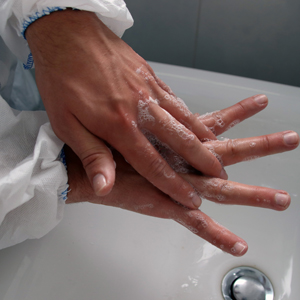NIEHS-funded researchers at the University of California (UC) San Diego found evidence that triclosan — an antimicrobial found in medical soaps and household products — worsens fatty liver disease in mice that ate a high-fat diet.
The authors also uncovered molecular mechanisms by which triclosan strips away liver cells’ natural protections and disrupts both metabolism and the gut microbiome. The study was published Nov. 23 in Proceedings of the National Academy of Sciences.
“The significance of this study lies in the fact that the ubiquitous presence of the environmental contaminant triclosan in conjunction with the prevalence of high consumption of dietary fat ... are common factors encountered in everyday life,” the authors wrote.
 Products containing triclosan are widely used, which may explain why it is found in aquatic ecosystems and some drinking water sources. (Photo courtesy of Creative Images / Shutterstock.com)
Products containing triclosan are widely used, which may explain why it is found in aquatic ecosystems and some drinking water sources. (Photo courtesy of Creative Images / Shutterstock.com)Widespread use
“Triclosan’s increasingly broad use in consumer products presents a risk of liver toxicity for humans,” said senior author Robert Tukey, Ph.D., in a UC San Diego press release. Tukey directs the NIEHS Superfund Research Center at UC San Diego. He led the study with Mei-Fei Yueh, Ph.D., a former project scientist in his lab, and colleague Michael Karin, Ph.D.
In 2016, the U.S. Food and Drug Administration (FDA) banned triclosan from over-the-counter soaps. But the chemical continues to be found in medical-grade antibacterial soaps and personal care products such as toothpastes, shaving cream, and some cosmetics. FDA does not regulate other products that may contain triclosan, including clothing, kitchenware, furniture, and toys.
This widespread use may explain why the compound is found in aquatic ecosystems and some sources of drinking water.
Liver harm shown in earlier studies
In the new study, the researchers fed a high-fat diet to mice with type 1 diabetes. Some of them were also fed triclosan, resulting in blood concentrations comparable to those reported in human studies.
Triclosan accelerated development of fatty liver, fibrosis, and nonalcoholic fatty liver disease (NAFLD; see sidebar). In humans, NAFLD is an increasingly common condition that can lead to liver cirrhosis and cancer.
In an earlier mouse study, the team found that triclosan exposure promoted liver tumor formation by interfering with a protein responsible for clearing away foreign chemicals. The study was an NIEHS Paper of the Year.
 Yueh, left, shown with Tukey, was first author on both the new study and the earlier one that reported liver tumors in mice after triclosan exposure. (Photo courtesy of Robert Tukey)
Yueh, left, shown with Tukey, was first author on both the new study and the earlier one that reported liver tumors in mice after triclosan exposure. (Photo courtesy of Robert Tukey)Decreased protective protein, microbiome
High-fat diets normally trigger cells to produce more of a protein that helps protects liver cells from damage, called fibroblast growth factor 21. Tukey and team discovered that triclosan affects two molecules, ATF4 and PPARgamma, required for making that protective protein. The antimicrobial also disrupted genes involved in metabolism.
To make matters worse, the exposed mice had less diversity in their gut microbiomes, generally associated with poorer health.
Although these findings have only been observed in mice who ingested triclosan, these same molecular systems operate in humans. “This underlying mechanism now gives us a basis on which to develop potential therapies for toxicant-associated NAFLD,” Tukey said.
Toxicity studies
Scientists in the NIEHS Division of the National Toxicology Program also study triclosan, according to Vicki Sutherland, Ph.D., project leader for antimicrobials. “We ran a short-term toxicity assessment looking at reproductive effects in rodents,” she explained. A report on results of the small study should be published later this year.
An FDA National Center for Toxicological Research study on triclosan skin toxicity should also be published later this year, she noted.
Regarding hand sanitizers, Sutherland explained that they differ by speed of action and whether they leave residues. Given their wide use during the current pandemic, she noted that residues can generally be removed by washing.
- Non-residue-producing, such as alcohols, chlorine, peroxides, and aldehydes, act rapidly to destroy bacteria then quickly disappear by evaporation or breakdown.
- Residue-producing, such as triclosan, triclocarban, and benzalkonium chloride, leave long-acting residues on the surface to be disinfected and thus have a prolonged action.
Citations:
Yueh MF, He F, Chen C, Vu C, Tripathi A, Knight R, Karin M, Chen S, Tukey RH. 2020. Triclosan leads to dysregulation of the metabolic regulator FGF21 exacerbating high fat diet-induced nonalcoholic fatty liver disease. Proc Natl Acad Sci U S A (49):31259–31266.
Yueh MF, Tukey RH. 2016. Triclosan: a widespread environmental toxicant with many biological effects. Annu Rev Pharmacol Toxicol 56:251–272.
Yueh MF, Taniguchi K, Chen S, Evans RM, Hammock BD, Karin M, and Tukey RH. 2014. The commonly used antimicrobial additive triclosan is a liver tumor promoter. Proc Natl Acad Sci U S A 111(48): 17200–17205.
(This story is based on a UC San Diego press release by Heather Buschman, Ph.D.)










